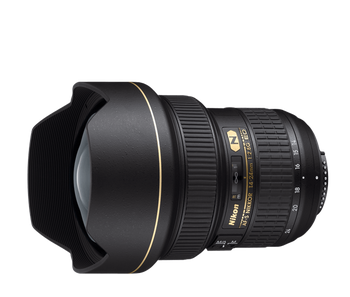When it comes to choosing the right lens for your photography needs, Nikon lenses offer a wide range of options to suit various styles and preferences. In this comparison, we'll be taking a closer look at two popular lenses from Nikon: the AF-S NIKKOR 14-24mm f/2.8G ED and the AF-S DX NIKKOR 18-300mm f/3.5-6.3G ED VR.
Focal Length and Zoom Range
The most obvious difference between these two lenses is their focal length range. The Nikon AF-S NIKKOR 14-24mm f/2.8G ED has a relatively narrow zoom range of 14-24mm, making it ideal for landscape, architecture, and interior photography where a wide-angle perspective is desired. On the other hand, the Nikon AF-S DX NIKKOR 18-300mm f/3.5-6.3G ED VR has an impressive zoom range of 18-300mm, covering a broad spectrum of focal lengths from wide-angle to telephoto. This makes it a great all-purpose lens for everyday shooting, travel, and wildlife photography.
Aperture and Low-Light Performance
Another significant difference between these two lenses is their aperture range. The Nikon AF-S NIKKOR 14-24mm f/2.8G ED has a constant aperture of f/2.8 throughout its zoom range, making it well-suited for low-light photography and creating a shallow depth of field. In contrast, the Nikon AF-S DX NIKKOR 18-300mm f/3.5-6.3G ED VR has a variable aperture that ranges from f/3.5 to f/6.3, which may not be as effective in low-light conditions.
Image Stabilization and Vibration Reduction
The Nikon AF-S DX NIKKOR 18-300mm f/3.5-6.3G ED VR features Nikon's Vibration Reduction (VR) technology, which helps to reduce camera shake and blur caused by hand movement or low light. This is particularly useful for handheld shooting and telephoto applications. The Nikon AF-S NIKKOR 14-24mm f/2.8G ED does not have built-in image stabilization, but it can be used with Nikon cameras that feature in-body image stabilization.
Optical Quality and Construction
Both lenses are part of the Nikon lenses family and boast high-quality optics and construction. The Nikon AF-S NIKKOR 14-24mm f/2.8G ED features a complex optical design with 14 elements in 11 groups, including two ED glass elements and three aspherical lens elements. This results in exceptional sharpness, contrast, and color accuracy. The Nikon AF-S DX NIKKOR 18-300mm f/3.5-6.3G ED VR also has a sophisticated optical design with 16 elements in 12 groups, including three ED glass elements and three aspherical lens elements.
Size, Weight, and Portability
The Nikon AF-S NIKKOR 14-24mm f/2.8G ED is a relatively large and heavy lens, weighing in at approximately 940g and measuring 98mm in diameter and 131.5mm in length. The Nikon AF-S DX NIKKOR 18-300mm f/3.5-6.3G ED VR is also a sizable lens, but it's slightly lighter at around 550g and more compact at 78mm in diameter and 99mm in length.
Conclusion
In conclusion, the Nikon AF-S NIKKOR 14-24mm f/2.8G ED and the Nikon AF-S DX NIKKOR 18-300mm f/3.5-6.3G ED VR are two distinct lenses that cater to different photography needs. The 14-24mm lens is ideal for wide-angle applications, low-light photography, and situations where a high level of optical quality is required. The 18-300mm lens, on the other hand, offers an incredible zoom range, making it perfect for everyday shooting, travel, and wildlife photography. When choosing between these two Nikon lenses, consider your specific needs and preferences to ensure you select the best lens for your photography style.































